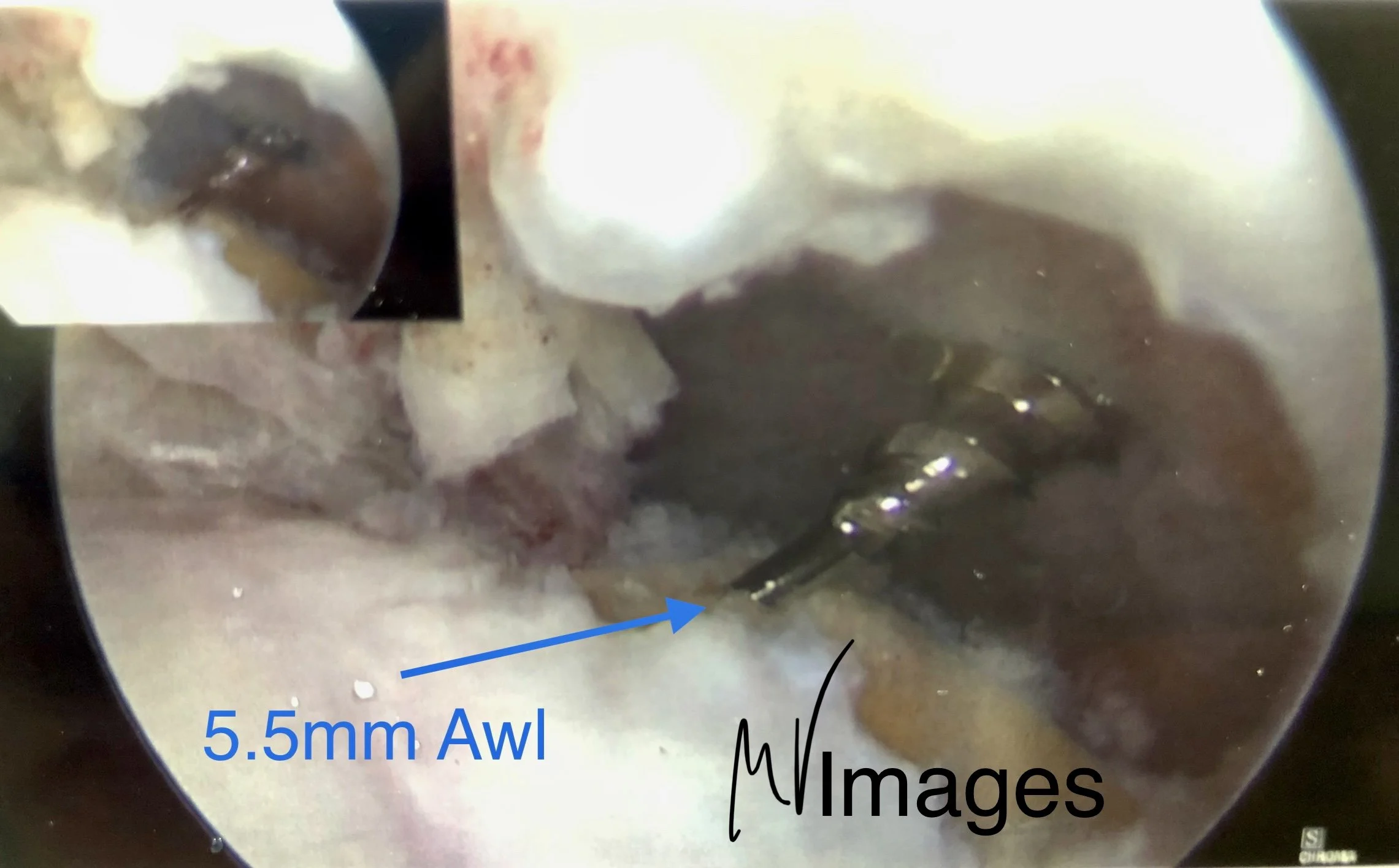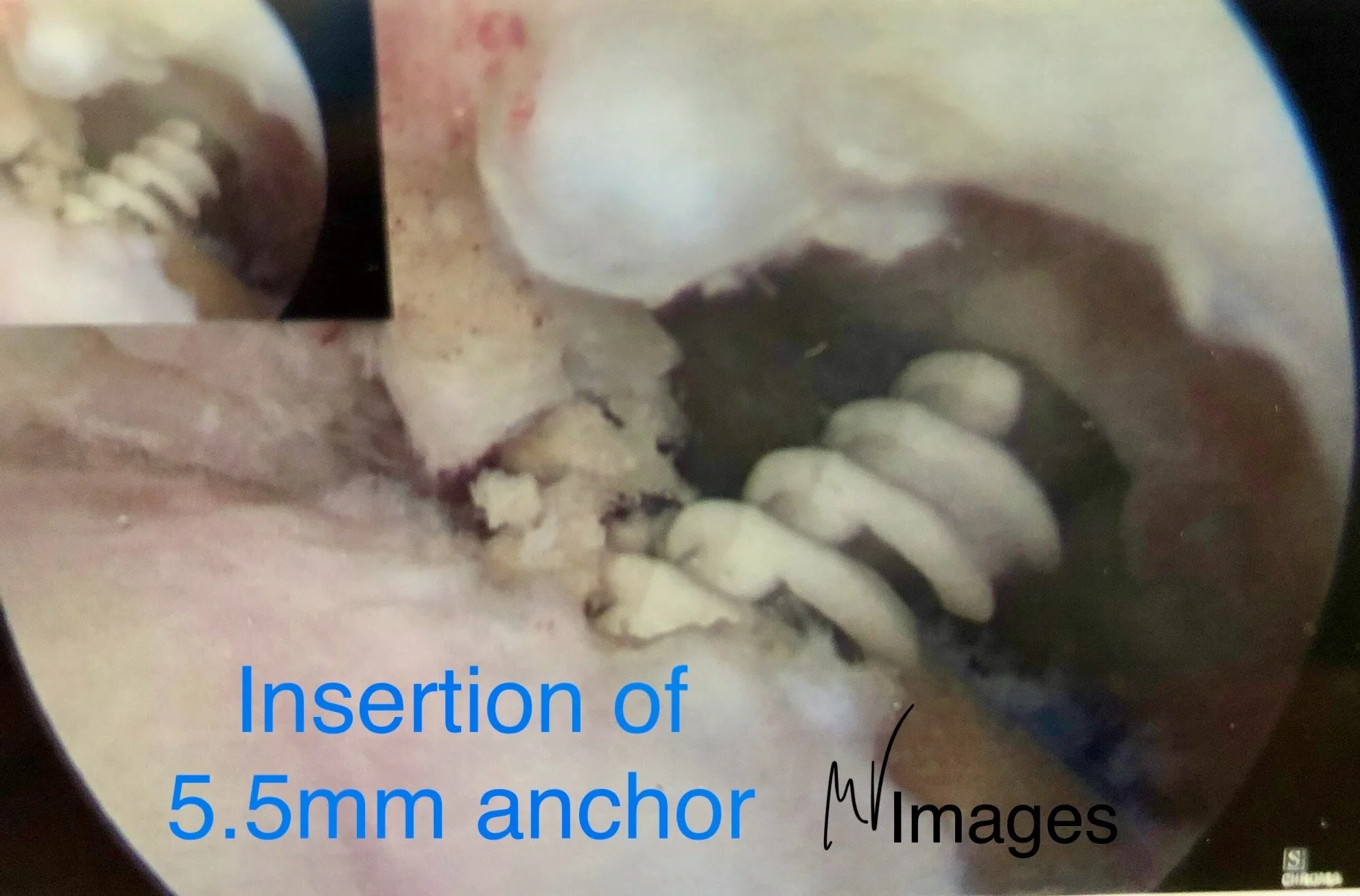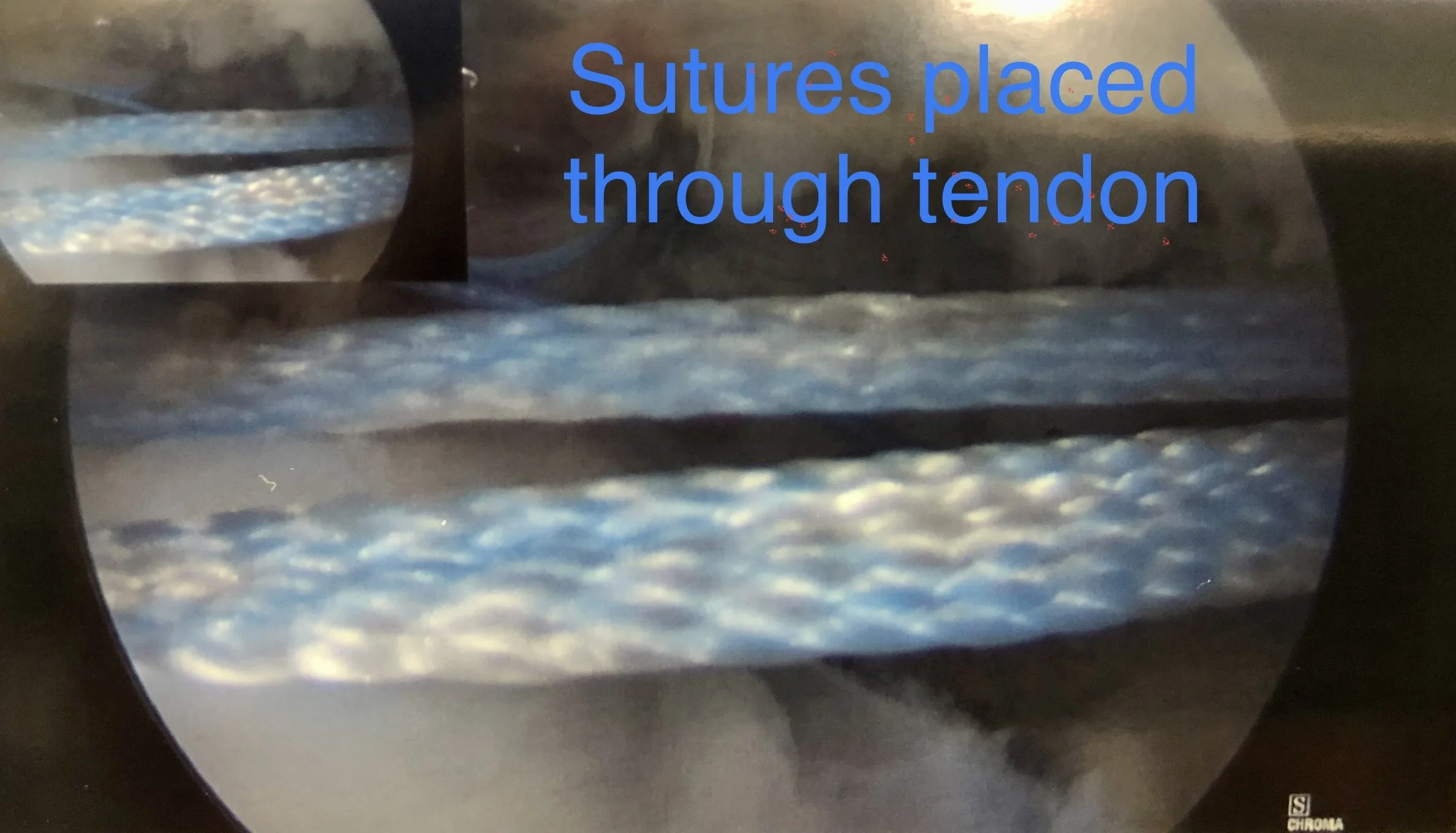
Rotator Cuff Tear
What is a rotator cuff tear ?
Four muscles, with their tendons, around the shoulder make up the rotator cuff.
Tears of one or more of the tendons can result following a fall, minor trauma or through age related degeneration.
Rotator cuff tears can result in painful and weak shoulder function.
The photo shows a rotator cuff tear from inside the shoulder.
Diagnosis
A detailed history of symptoms and shoulder examination will provide many clues to the cause of symptoms.
Investigations - shoulder X-ray & ultrasound scan to aid making the right diagnosis.
Treatment options
Physiotherapy
Specialist shoulder physiotherapy aims to rehabilitate the shoulder, back & neck muscles to compensate for the injured tendon, & sometimes may avoid surgery.
Arthroscopic (Keyhole) surgery
Mathew can perform keyhole surgery, through small incisions, to repair the torn rotator cuff tendons.
What does it look like in a shoulder?
Watch Mathew use arthroscopic surgery to assess a shoulder
Arthroscopic photos of Arthroscopic rotator cuff repair
Surgical technique videos - arthroscopic rotator cuff repair
Mathew uses equipment from medical device companies Smith & Nephew and Arthrex for rotator cuff surgery.
Surgical animations of the Smith & Nephew rotator cuff repair technique can be view on YouTube.
Surgical animations of the Arthrex rotator cuff repair technique can be viewed on YouTube.
Recovering post arthroscopic rotator cuff surgery
After surgery a sling is required for 6 weeks while in bed and when outdoors
Rehabilitation with physio starts immediately
Avoid getting the wounds wet until stitches are removed between 10-14 days
Driving is not advised for around 6-8 weeks following surgery
Returning to work depends on the nature of your job - (office based 4-6 weeks / manual work 8-12 weeks)
No contact sports or heavy lifting for at least 3 months following surgery










